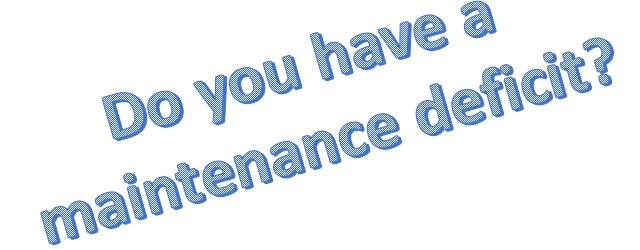Part 2 – You’re not dead. A call to action.
Are you ready to ramp back up?
Slowing down reduced supply and raised prices. Survival cost-cutting also put our companies into a state of Covid-induced paralysis. Like a person who is paralyzed – vital systems keep working so we survive, but growth, movement, and improvement all stop. I recall a soccer accident where my knee was damaged. I wasn’t paralyzed but that one leg was immobilized. It took me months to recover after the surgery was completed. The muscles in my leg had shrunk and strength needed to be rebuilt. In normal times, I’d have kept using the muscles and they would have strengthened, not shrunk.
In normal times, companies run hard to produce as much as they can to maximize sales and margins. Along the way, equipment breaks down. They suffer delays and lose valuable production time. Their maintainers rush to fix them, then they restart and run hard again. They’ve probably created a bit of scrap, or the need for re-work, they realize they are behind on meeting their targets, so they want to make up for the lost time. They run even harder to catch up and then, the cycle repeats.
Then Covid slowed us all down. We didn’t need to run so hard, so we slowed down. Costs were cut wherever possible. With lower demand and output, there have been fewer failures, and less pressure to “catch up” when they are being repaired. Our physical assets: plant and equipment, are getting a bit of a breather. They are running at lower stress levels, better and longer. Yet they are still aging and deteriorating – albeit more slowly. What will happen when demands rise again?
Most of us in the reliability and maintenance field know all too well that senior management tends to ignore maintenance unless something is broken down. Breakdowns occur when assets are running and usually heavily loaded. Demands are high and so are the physical stresses on those assets. Now, after more than a year at reduced outputs, maintenance is very likely all but forgotten. There are fewer things breaking down, business impacts are reduced, there’s time and capacity to make up for lost production time. Business impacts are minimal. So why make improvements?
As part of their survival cost-cutting, many companies also cut back spending on training and other improvements that they perceived as unnecessary. Are you shooting yourself in the foot?
Our productive assets are in a weakened state but demands for high performance just haven’t been there for over a year. We got away with the reduced effort to improve or do capital replacements. We could get by with the skills, knowledge, and ability of our workforce who were rising to new challenges. A lot of new experience was gained and training was set aside.
Many have forgotten about (or just ignored) the problems we had before Covid slowed us all down. Based on what I’m hearing and observing today, most companies are ill-prepared to ramp up quickly and sustain high levels of output. Wherever there were reliability problems before Covid – they are very likely still there. If improvement initiatives were put on hold, as many were, then nothing is likely to have changed.
Workers have adapted to fewer contractors and learned how to do more themselves. To some extent, they are working both harder and smarter, but the old equipment problems have not been dealt with. They are destined to return as ramped-up production levels take their toll on the plant and equipment.
Breakdowns lead to downtime and costly repairs. Longer lead times mean even longer downtime unless you’ve improved your planning, scheduling, and spare parts supplies. But you probably didn’t – all improvement efforts were on hold!
The result will be disappointing outputs, increased operating costs, and reduced operational efficiency as you ramp up. That is an unstable foundation for organic growth – expansion.
Can you maintain an expanded plant any better than an old one if you don’t do anything about the maintenance program itself? Doing the same thing over and over again, won’t achieve a different result.
Act now. The pressures are still low, but they won’t be low for much longer. It’s never too late to consider what you can be doing differently so that you improve operating efficiencies to reinforce that foundation for organic growth.
Take our quick Maintenance and Reliability Maturity self-assessment (free). Click here for access.


